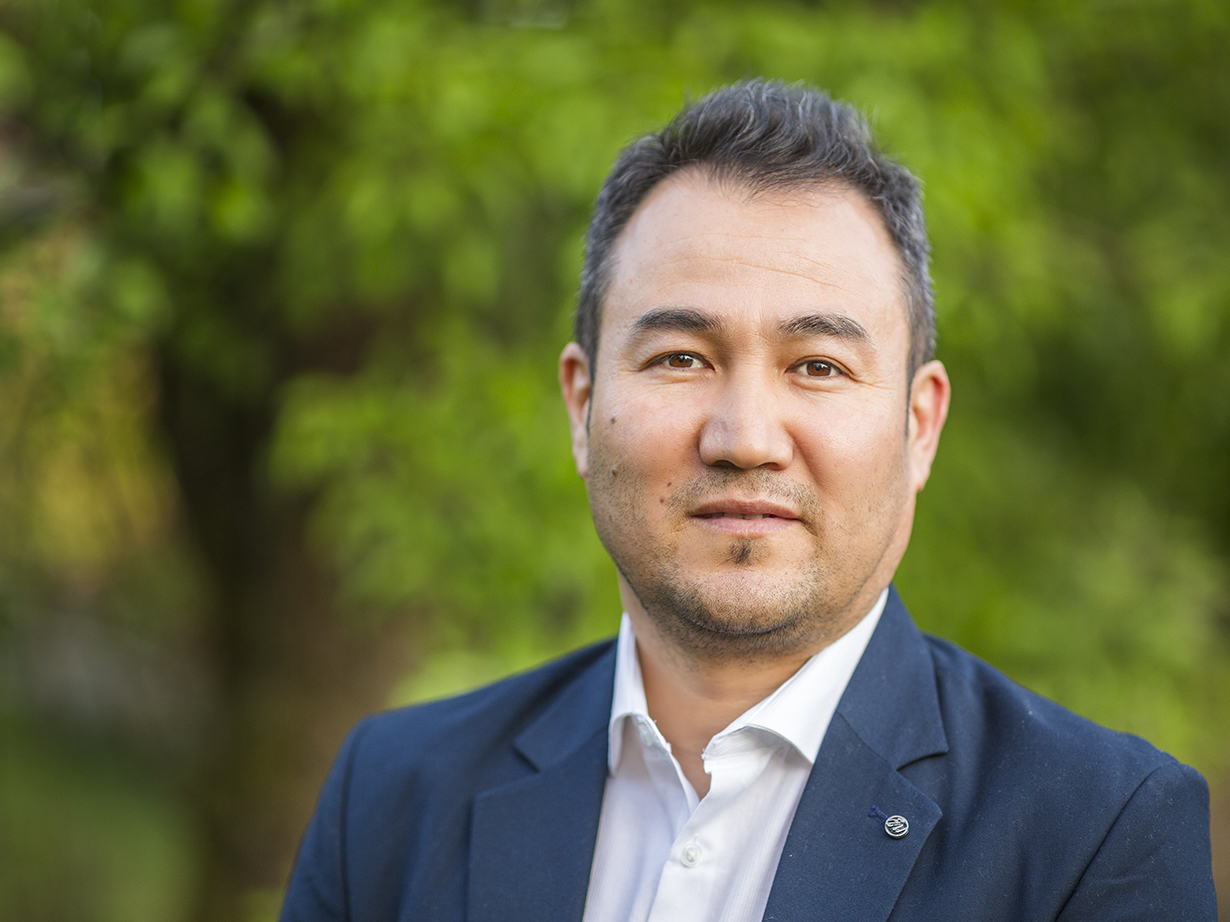When Ghu Ali Danish Kamal and his family arrived in Portland from Afghanistan, they were provided with $722 in cash. He headed straight to the art store but quickly realized his family needed necessities such as clothing. “I told my son that I’m going to stop drawing or painting because I cannot afford it,” he says. “The cash I get is for you, not to buy paints. But my son said, ‘No, we don’t need shoes. We don’t need clothing. You need paints and brushes.’”
Danish, as he is known, was born in the province of Ghor, Afghanistan, in 1985. He is Hazara, a member of one of Afghanistan’s largest ethnic minorities. When he was five, his family moved to Kabul, Afghanistan’s capital, and settled in an area where Hazaras had lived for centuries.
After the collapse of the Soviet-backed government in 1992, the Afghan Civil War—characterized by violence between different ethnic groups—began.
Danish and his family sometimes had to hide in a hole his father had dug in order to escape the violence surrounding them.
“I can remember the night that the rockets were coming,” says Danish. “My dad was saying that if we were lucky enough to survive this night, tomorrow, he would find a solution to get out of here.”
The next day, the family took a bus to Jalalabad, near the Pakistani border, in an attempt to escape the country. Because they were Hazara, the journey was quite dangerous, facing ethnic discrimination throughout their trek.
“My dad said that you need to put your heads down so that no one can see you,” Danish remembers. “Someone was calling, do you guys have Hazaras among you? And people sitting around us—they were good people—said, ‘We don’t have Hazaras here.’ That was the only way the guards would let our bus go to Jalalabad—if there were no Hazaras.”
Danish and his family waited at the border for hours, and finally were only admitted by the Pakistani guards if they paid a special “fee” because they were Hazara—in other words, a bribe.
Danish and his brother stayed in Quetta, Pakistan, while their parents returned to Kabul, where they had a general store. The two brothers lived in a courtyard among other Hazara families.
“I was 9 and my brother was 15 years old,” he explains. “But the good thing is that there was no issue about who could be taking care of us. In Pakistan, we lived in a Hazara community. And we were taken care of.”
Danish attended school. Early each morning and in the evenings, he helped his brother sell mantu, a thin dough filled with meat and spices that is a favorite food of the Afghan people.
School was where Danish discovered his love for art.

“My teacher painted an apple on the blackboard, and said ‘guys, this is, this is an apple’,” says Danish. “And I stood up there and said, no, this is not an apple, it looks like a mango and orange. She said, ‘come here—if you think that this is not an apple, then you have to show me what an apple looks like.’ So I went up, and drew an apple with a few lines. All the students in class clapped and said that, yes, this is an apple. From that time, I knew I could draw really well.”
After completing a university degree in sociology in Pakistan, Danish married and worked in Kuwait, eventually returning to Afghanistan to be with his wife and three children.
When the Taliban entered Kabul on Aug.13, 2021, Danish was working as an entrepreneur, providing linguistic services and working closely with U.S. firms. His father warned him that many people knew he had been working with Americans and it was not safe to stay in their neighborhood.
“I packed everything. I gathered my family. As I started the car, I saw men in beards and robes searching people on the street a few blocks away,” he says.
After a 12-hour drive, Danish and his family arrived at Mazar-i Sharif where, as Hazara, they faced questioning at many checkpoints. Eventually, with the help of U.S. lawyers, Danish and his family found their way to a refugee camp in Abu Dhabi, in the United Arab Emirates.
“We were there at the camp for almost eight months,” he remembers. “It was terrible because being in the camp—you are not allowed to walk anywhere or go anywhere inside. Just your room. You don’t have any other options than wait and wait and wait.”
After the long wait, Danish and his family arrived in Virginia after receiving help from the services and lawyers in the US—the same ones who helped him and his family arrive at the refugee camp. Eventually, they relocated to Portland based on a recommendation from those lawyers, stating there more resources could be provided to accommodate him and his family if they were to move. Now, Danish works as a case manager for Lutheran Community Services, in the resettlement program for Global Refugees.
“Despite the work being challenging,” he says, “I feel like I am making a difference.” He only has 90 days to work with refugees and their families, providing them with services they need such as obtaining employment, finding housing, and receiving insurance in a limited time frame. Alongside this, the work is emotionally tolling, as many refugees are displaced from their family, and are traumatized from their journey and experiences in their native countries.
And once again he is making art. At home, surrounded by his most recent paintings, depicting his refugee journey to the U.S., Danish remembers the conversation with his son in the art store. “That gave me the courage to begin a new life,” he says.

